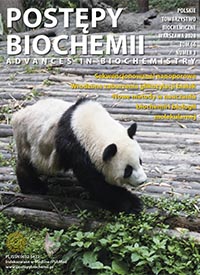The role of cytokinins in Legume-Rhizobium symbiosis
DOI:
https://doi.org/10.18388/pb.2020_343Abstract
Legume plants have a unique ability to form associations with nitrogen-fixing rhizobial species. An exchange of specific signaling molecules between host and microsymbiont constitutes the first step required both for bacterial infection and the formation of new, root-derived organs, called nodules. Since these two events occur in different root tissues, namely in the rhizodermis and in the underlying cortical cells, their strict regulation and coordination have to exist. An essential role of plant hormones, especially cytokinins, in the modulation of nitrogen-fixing symbiosis has been widely postulated. Activation of the cytokinin signaling pathway in the root cortex, by an unknown signal, is thought to be a key event of the infection process. As a consequence bioactive cytokinins are biosynthesized in the root susceptible zone, and they are a part of a positive feedback loop to trigger cortical cell division and sustain nodule organogenesis. Understanding the genetic mechanisms underlying events that occur in the inner layers of the root is one of the key challenges emerging in the study of symbiotic processes.
Downloads
Published
Issue
Section
License
Copyright (c) 2020 Advances in Biochemistry

This work is licensed under a Creative Commons Attribution 4.0 International License.
All journal contents are distributed under the Creative Commons Attribution-ShareAlike 4.0 International (CC BY-SA 4.0) license. Everybody may use the content following terms: Attribution — You must give appropriate credit, provide a link to the license, and indicate if changes were made, ShareAlike — If you remix, transform, or build upon the material, you must distribute your contributions under the same license as the original. There are no additional restrictions — You may not apply legal terms or technological measures that legally restrict others from doing anything the license permits.
Copyright for all published papers © stays with the authors.
Copyright for the journal: © Polish Biochemical Society.




